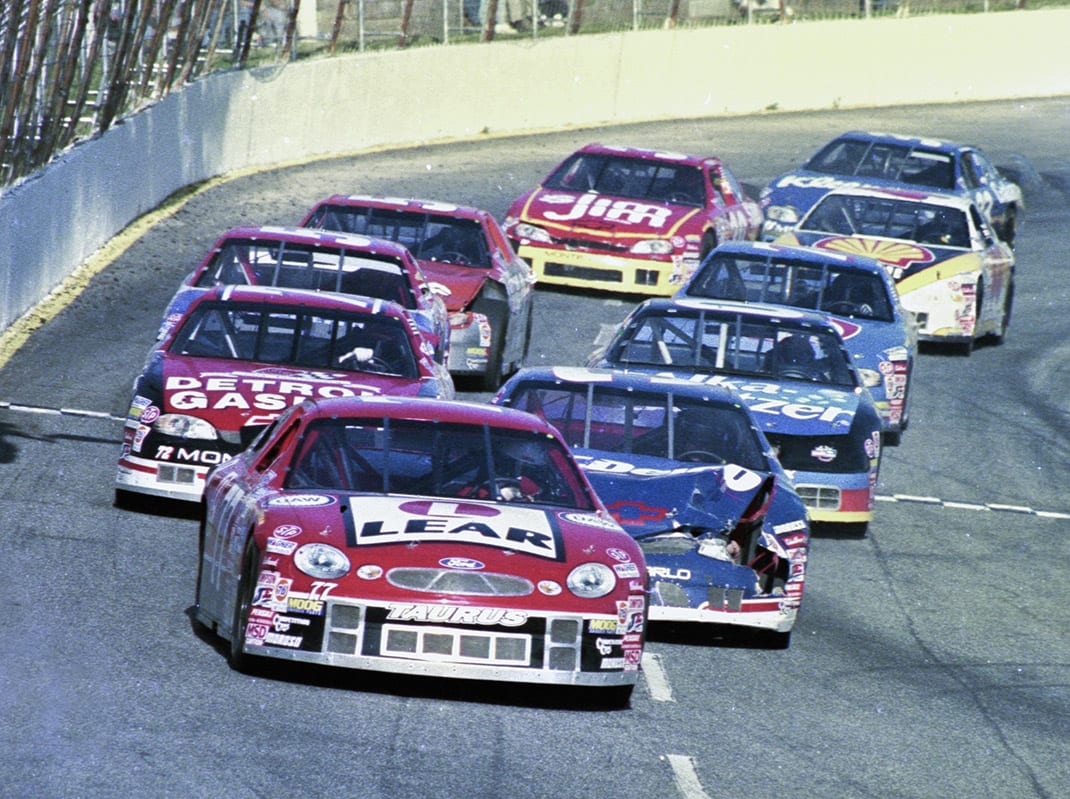The history of North Carolina’s Hickory Motor Speedway and NASCAR will be forever intertwined.
The track, which opened as a half-mile dirt oval in 1951, has hosted NASCAR racing for most of its history. Tim Flock won the track’s first NASCAR Cup Series event in 1953.
Through the years, NASCAR ran 35 Cup Series races at the track that was paved in 1967, with Herb Thomas, Junior Johnson, Ned Jarrett, Rex White, Richard Petty, David Pearson and Bobby Isaac among the winners. Johnson won there seven times.
Tiny Lund won the final Cup Series race at Hickory on Aug. 28, 1971, but the track continued to host the NASCAR Late Model Sportsman division.
What is now known as the NASCAR Xfinity Series was created in 1982 with Jack Ingram holding off Sam Ard to win an April 10 300-lapper at the reconfigured .363-mile Hickory oval.
Hickory Motor Speedway hosted 42 Xfinity Series races. Among the winners were Morgan Shepherd, Tommy Houston, Tommy Ellis, Dale Jarrett, Jimmy Spencer, Chuck Bown, Steve Grissom, Bobby Labonte, Dennis Setzer, Johnny Benson Jr. and Dick Trickle.
With NASCAR taking the Xfinity Series to bigger tracks all across the country, the series made its final appearance at Hickory on April 11, 1998.
Thirty-one competitors took the green flag for the Galaxy Food Centers 300, including future NASCAR Cup Series champions Tony Stewart and Matt Kenseth. Two-time Daytona 500 winner Dale Earnhardt Jr. was also in the starting lineup.
Other notables in the field included Randy LaJoie, Elliott Sadler, Jason Keller, Buckshot Jones, Phil Parsons and Mike McLaughlin. However, it was series journeyman Ed Berrier who triumphed in the final NASCAR Xfinity Series race at Hickory Motor Speedway.
“I thought it was great to be able to win at Hickory,” Berrier recalled more than 20 years after his only Xfinity Series victory. “That’s a pretty tough short track. At the back of my mind I thought that was going to be the turning point for our race team to be able to go out and get some more victories, too.
“It didn’t go the way I anticipated going in.”
Berrier, born in Winston-Salem, N.C., spent years chasing his racing dream.
He made his NASCAR Xfinity Series debut in 1984, entering 18 events and garnering three top-10 finishes.
Berrier drove for a bevy of different teams before landing with Moy Motorsports near the end of the 1997 season, driving the No. 77 Ford with sponsorship from the Lear Corp. and UAW.
The deal to drive the No. 77 came together after a phone call from longtime Cup Series driver Jimmy Means, who was crew chief for Moy Motorsports.
“I remember when Jimmy first called me. He was down at the drag strip in Mooresville (N.C.),” Berrier said. “That was in ’97. Then, in ’98 he convinced the car owners — they lived up north, they were Union leaders — he convinced them to take it (the race team) to his shop. Jimmy had a lot of guys around the shop that were really good and made it a lot easier for him to get some help that he needed.”
Means, who now runs his own Jimmy Means Racing program in the Xfinity Series, says it was one of the few times during his career that he had a decent amount of sponsorship money with which to work.
As a result, the team built a new car for the race at Hickory, a track where Berrier had made a dozen Xfinity Series starts.
Means recalls that building a new race car for that particular event was imperative because the field size was limited to 31 cars instead of the standard 43 because the track couldn’t accommodate the larger field. Means wanted to ensure the team would qualify since it had already failed to make the race at Rockingham Speedway earlier in the year.
“That was a time when we had a sponsor, Lear, and we had a little bit of money to race with,” Means explained. “We built that car because we were going to have to be the best we could be to even qualify.”
Click below to keep reading.
